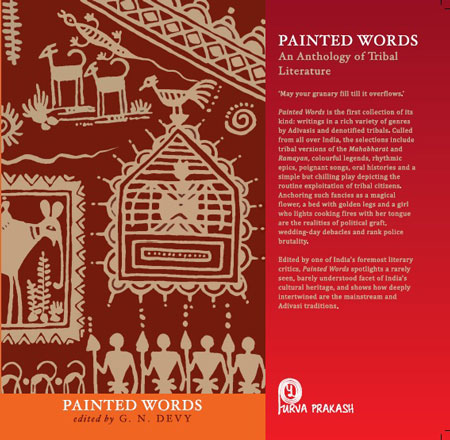From ever green forests of western ghats to deciduous forest of Vidarbha, each region is bestowed with unique natural beauty. Jewels in the crown are the tiger reserves like Tadoba, Melghat, Pench and Sahyandri. Mowgli Land is inviting you, on the backwaters of Totladoh lake, in Pench National Park
Learn more: http://www.mahaecotourism.gov.in/Site/Common/nationalParks.aspx
Welcome to Maharashtra Forest
Globally as well as nationally, Forest Conservation is increasingly being viewed as a powerful instrument in sequestering carbon and thereby offset adverse climate change. Maharashtra Forest Department, being custodian of the State’s rich and diverse bio-diversity, is committed to a conservation-centric management and protection strategy. Wild-life focused eco-tourism management hinges on sustainability. Production-be it timber or non-timber forest produce is managed with sustainability at its core. Joint Forestry Management to secure natural resources as well as livelihood security remains the major people-centric activity. Attempts are on to hone local artisans’ skill in making value-added articles out of non-timber forest produce like bamboo and cane. Augmenting green cover on non-forest areas to achieve national targets of 33% of land area under green cover remains a forefront agenda. Intensive use of Information and Communication Technology supplemented by e-governance is under effective use to monitor ongoing forestry activities. Extensive use of digital platform to project a true picture of forest conservation forms the central theme.
Source: http://www.mahaforest.nic.in/index.php?lang_eng_mar=Eng
Ten years of Forest Rights Act: Maharashtra tops in implementation – but credit goes to one district
Mridula Chari, scroll.in, July 09, 2017 | Read the full report >>
Gadchiroli has recognised community forest rights in 66% of eligible land, compared to the state’s figure of 15%.
A new report by Community Forest Rights Learning and Advocacy – a collective that brings together community members and their organisations, civil society groups, researchers and academics – showed that Maharashtra’s success came on the back of record recognition of community forest rights in Gadchiroli, an eastern district of the state. “If Gadchiroli is taken out of the picture, Maharashtra’s average performance of CFR [community forest resource rights] implementation as compared to the minimum potential [of forest land eligible for these rights] would be approximately 10%,” the report noted.
It went on to say that Maharashtra had granted villages community forest resource rights in 15% of land with the potential for these rights to be recognised. However, this was only because it had recognised these rights in 66% of the potential land in Gadchiroli. In the rest of the state, there was no implementation at all in 21 districts, between 0% and 33% implementation in nine districts, and between 33% and 66% in two districts. […]
A strong Adivasi movement in Gadchiroli is an important reason for the district’s impressive performance. Adivasi groups here had pushed for the Forest Rights Act to be passed and pressure from the movement ensured that in May 2008, the state notified rules for the Act and directed gram panchayats to begin holding meetings to file community forest rights claims. […]
Yet, even as Maharashtra is foremost in implementing community forest rights, it is also slowly attempting to reverse this with new forms of forest management. […]
“Maharashtra has definitely done better than all other states,” said Sahu. “We just have to keep a watch to keep the momentum going.”
[Bold typeface added above for emphasis]
Date accessed: 7 September 2020
Tips for using interactive maps
Toggle to normal view (from reader view) should the interactive map not be displayed by your tablet, smartphone or pc browser
For details and hyperlinks click on the rectangular button (left on the map’s header)
Scroll and click on one of the markers for information of special interest
Explore India’s tribal cultural heritage with the help of another interactive map >>
See also
Adverse inclusion | Casteism | Rural poverty
Childhood | Tribal Children’s Right to Education in India
Demographic Status of Scheduled Tribe Population of India (Census figures 2011)
Fact checking | Figures, census and other statistics
Human Rights Commission (posts) | www.nhrc.nic.in (Government of India)
Search tips | Names of tribal communities, regions and states of India
“What is the Forest Rights Act about?” – Campaign for Survival and Dignity
“Who are Scheduled Tribes?” – Government of India (National Commission for Scheduled Tribes, NCST)

Tribal Literature by G.N. Devy >>
Free eBooks & Magazine: Adivasi literature and languages >>
“India, a union of states, is a Sovereign, Secular, Democratic Republic with a Parliamentary system of Government. The President is the constitutional head of Executive of the Union. In the states, the Governor, as the representative of the President, is the head of Executive. The system of government in states closely resembles that of the Union. There are 28 states and 8 Union territories in the country. Union Territories are administered by the President through an Administrator appointed by him/her. From the largest to the smallest, each State/UT of India has a unique demography, history and culture, dress, festivals, language etc. This section introduces you to the various States/UTs in the Country and urges you to explore their magnificent uniqueness…” – KnowIndia (Government), States and Union Territories (Visited: 2 September 2023)
Learn more about India’s 28 States and 8 Union Territories – From Andhra Pradesh to West Bengal | Nutrition >>
See also
Forest Rights Act (FRA) | Legal rights over forest land
Health and nutrition | Recommendations by the Expert Committee
People’s Archive of Rural India (PARI) | RuralIndiaOnline.org
States along the Narmada river’s course (source to Arabian Sea):
Madhya Pradesh | Maharashtra | Gujarat